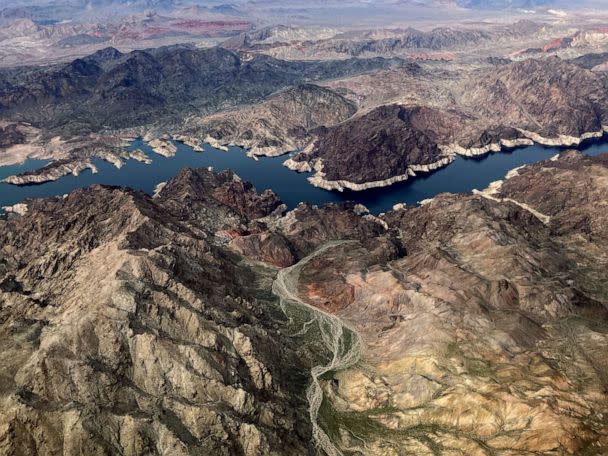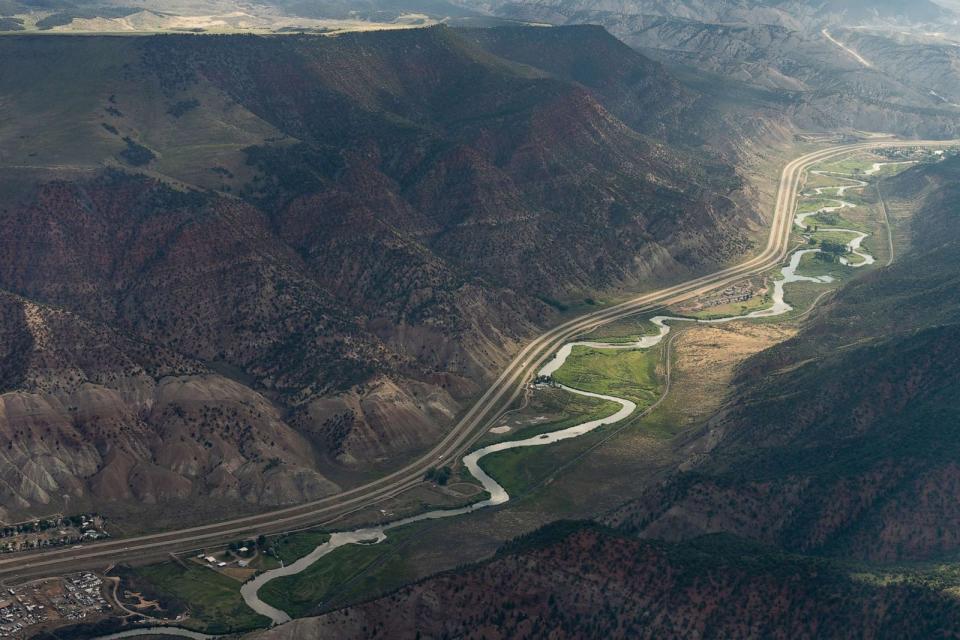Lake Mead sees 'significant improvement' in water levels after drought led to disturbing discoveries

Investments to enhance system conservation and improved hydrology have led to "significant improvements" for Lake Mead this year, the federal government announced Tuesday, after the lake hit historic lows last year and the remains of several bodies were found.
Lake Mead, located in the Colorado River Basin, will operate at a Tier 1 shortage next year, an improvement over the current Tier 2 shortage, according to the U.S. Bureau of Reclamation.
In addition to Lake Mead, Lake Powell is currently at a Tier 2 but will operate at a Tier 1 shortage in 2024, based on projections from a 24-month study, the government said.
MORE: Severe weather leaves 1 dead, tens of thousands without power in North Carolina
The water levels for Lake Mead are projected to reach slightly over 1,065 feet by January 2024, according to the Bureau of Reclamation, in large part due to an extremely wet winter that eased the effects of the longstanding drought.
In October 2022, the water levels were at a historic low, at roughly 1,046 feet.
The environmental crisis at Lake Mead led to the discovery of artifacts and even the remains of several people who were lost to the waters decades ago.
The government's 2024 plan also noted improvements in lower water supply cuts for Arizona and Nevada, as well as Mexico, through a water agreement between the country and the U.S.
MORE: Historic Lake Mead drought leads to disturbing discoveries on dried up ground
Next year, Arizona will have to cut 512,000 acre-feet of its Colorado River water supply, equaling about 18% of the state's yearly allotment, according to the Bureau of Reclamation. The Tier 2 shortage currently calls for Arizona to slash approximately 592,000 acre-feet, or 21% of its annual allotment.
An acre-foot is equivalent to 325,851 gallons of water, according to the Southern Nevada Water Authority.
Nevada will have to slash 21,000 acre-feet of its Colorado River water supply in 2024, or 7% of the state's yearly apportionment, according to the Bureau of Reclamation.
Presently, Nevada must cut 25,000 acre-feet, according to the Southern Nevada Water Authority.
Mexico must cut 80,000 acre-feet of its water supply from the Colorado River next year, or about 5% of the country's annual portion, the Bureau of Reclamation said. The country had to reduce its yearly allotment by 7% in 2023.

"The above-average precipitation this year was a welcome relief, and coupled with our hard work for system conservation, we have the time to focus on the long-term sustainability solutions needed in the Colorado River Basin. However, Lake Powell and Lake Mead -- the two largest reservoirs in the United States and the two largest storage units in the Colorado River system -- remain at historically low levels," Bureau of Reclamation Commissioner Camille Calimlim Touton said in a press release announcing the news.
"As we experience a warmer, drier West due to a prolonged drought, accelerated by climate change, Reclamation is committed to leading inclusive and transparent efforts to develop the next-generation framework for managing the river system," she added.
The Bureau of Reclamation cited the Inflation Reduction Act and the Bipartisan Infrastructure Law as strengthening the West's resilience to drought.
Last year, federal government officials said states like Arizona needed to radically shrink their water use before drinking water supplies or power production are affected, as water levels in the Colorado River were at significant lows.
"The system is approaching a tipping point and, without action, we cannot protect the system and the millions of Americans who rely on this critical resource," Touton told reporters in a briefing last year.
About 25.54% of the U.S. and Puerto Rico and 30.46% of the lower 48 states are experiencing drought conditions as of Aug. 8, according to the U.S. Drought Monitor.
Last year, Lake Powell was at 26% capacity, and Lake Mead sat at 27% capacity. The combined storage of the two reservoirs is at 36% of capacity, according to the Reclamation Bureau, up from 28% last year.
ABC News' John Kapetaneas, Stephanie Fasano and Ivan Pereira contributed to this report.
Lake Mead sees 'significant improvement' in water levels after drought led to disturbing discoveries originally appeared on abcnews.go.com

